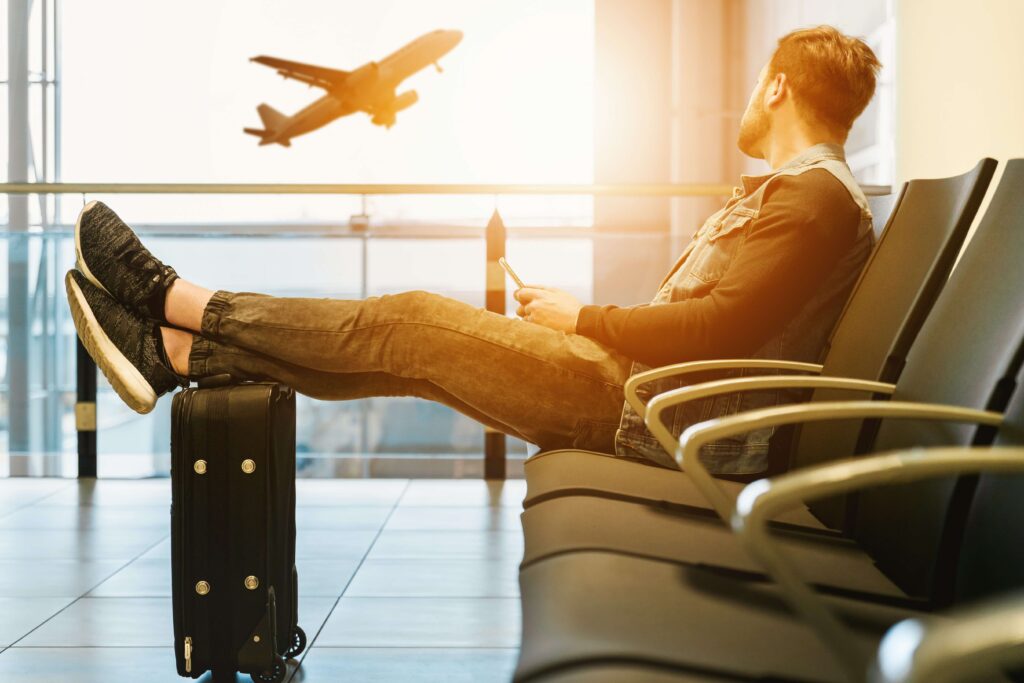Automation can be described as the use of diverse information technologies and/or artificial intelligence tools that maintains the system operations as well as reduces the need for human interference. In aviation, automated tools improve the processes of flight and air traffic control operations. Here are a few examples of automated services that illustrate the rapid technology growth in aviation.
Automated passenger service onboard
Nowadays, passenger service on board is often based on automated tools. Passengers can get to know the necessary information, make a meal order, and basically experience many onboard services automatically. While the ability to call a flight attendant just by clicking a button seems to be an ordinary action onboard, one of strategic priorities of many in the aviation industry is to invest into even more automated passenger service solutions.
In 2018, Matthew W. Orr filed a patent application titled “Airplane Passenger Service Robot.” The assignee of the patent is the Boeing company. This automated system completes the tasks of flight attendants such as taking food or drink orders and supplying them with required items. Besides, the passenger service robot adapts to navigation in the airplane. If a passenger stands in the way of the robot, it gives audio-visual warnings, and if a passenger still stands, the robot retracts its wheels and lets a passenger step over itself. The shape of the robot may include steps, so passengers can easily cross over. The new automated tools may shift the structure of present passenger service by getting work done more efficiently and reducing the need for flight attendants.
Welcome to the pilotless flight: a future phrase or reality?
Words like “autopilot” or “autoland” are well-known examples of automated systems in the aviation industry. In the present day, during commercial flights, the autopilot has taken over many manual flying tasks off human pilots’ hands. It demonstrates the development of automated tools’ adaption into control systems and operations.
Over the years, aviation engineers have been putting a lot of effort into creating the pilotless flight concept that covers automated taking off, autopiloting and autolanding. At the end of 2019, the European aerospace company Airbus confirmed a successful test of automated aircraft takeoff at Toulouse-Blagnac airport in France. The test aircraft A350-1000 completed eight automatic takeoffs over four and a half hours. The success of the mentioned test is an essential step to even more automated flight operations.
The debate about “pilotless flights” has been going over the years and it is still hard to predict how automated systems or tools can transform the pilot’s profession in the future. At the moment, “pilotless flights” still require real pilots to control the flight. Some future predictions suggest that automated technologies may affect the role of the pilot, allowing him or her to focus more on strategic management and decision making and less on aircraft operations. As a consequence, “pilotless flights” could lead to a cost reduction of flight operations.
Will voicebots and chatbots take over aviation customer service?
The industry of aviation can be proud of not only innovations in flight operations, but also for a rapid development in customer service automation. Customer service is a highly essential function of representing either airport or airline view to the customer’s needs. According to the SITA report Air Transport IT Insights 2019, 89% of airlines improved or planned to improve the customer service with AI-based virtual agents and chatbots by 2022. The numbers show that the aviation industry continuously invests in AI-powered tools, principally automated technologies for customer service.
Automated customer service commonly covers tools of chatbots and voice bots. Chatbots ease the customer’s experience while looking for relevant information and answer either on an airline’s website or tablets at airports. Chatbots usually manage to solve problems like flight cancellation, changing the flight, etc. When AI-based chatbots cannot manage the customer’s needs, then a real customer service expert intervenes in the conversation.
Voice bots mostly assist pilots and flight attendants. By use of natural language processing and/or machine learning, voice bots recognize a person’s speech and answer accordingly. Automated tools help during the challenging tasks, whether it is a mechanical issue for a pilot or connection loss for a flight attendant, voice bots eliminate the necessity to type, click, or point. Also, voice bots improve customer service on board while speeding up communication processes.
